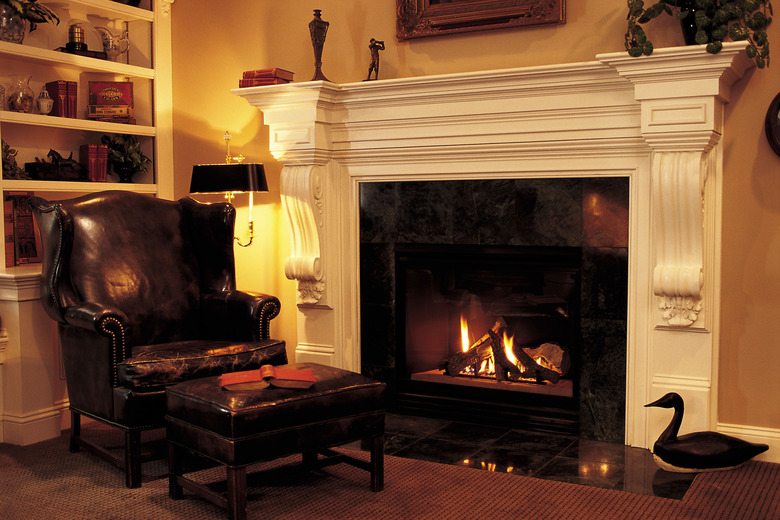How To Check For A Gas Leak On A Fireplace Log
Things Needed
-
Flashlight
-
Cup
-
Liquid dish soap
-
Foam paintbrush
Warning
If you suspect or detect a leak, exit the home immediately and call the gas company or 911 from a phone outside the residence.
Do not turn on any wall switches, lights or other appliances within the home if you suspect a gas leak.
Do not start the ignition on your car because this can also cause the gas to ignite if a leak is present.
Gas fireplace logs provide a mess-free way to enjoy a warm, blazing fire on a cold winter night. The logs connect to a gas supply line at the side of the fireplace and run on either natural gas or propane. While gas logs typically function properly for years, like all gas appliances they can develop leaks. Gas leaks inside the home are always dangerous. If you suspect leaking gas logs, inspect them immediately.
Step 1
Open any screens or doors in front of the fireplace opening.
Step 2
Sniff the air around the fireplace to determine if it smells like rotten eggs. This is an artificial odor added by gas companies to help detect leaks. Rotten egg odors are a positive indication of a leak.
Step 3
Turn off all noises and appliances in the room with the fireplace and listen carefully to determine if you hear a whistling or a hissing sound, which also indicates the presence of a leak.
Step 4
Shine a flashlight into the base of the fireplace and observe any debris such as soot or dust to see if it moves. Movement is often an indication of a gas leak as well.
Step 5
Walk outside the home to the location of the fireplace chimney. Locate the gas lines for the fireplace and observe the grass and vegetation nearby. If the vegetation is dead or yellow, it may indicate a gas leak has killed them.
Step 6
Fill a cup with 8 ounces of water and 1 to 2 teaspoons of liquid dish soap. Mix the solution up using a foam paintbrush and then apply it liberally to all portions of the gas line and the logs. Watch the logs and gas line for air bubbles, which indicate a gas leak.
